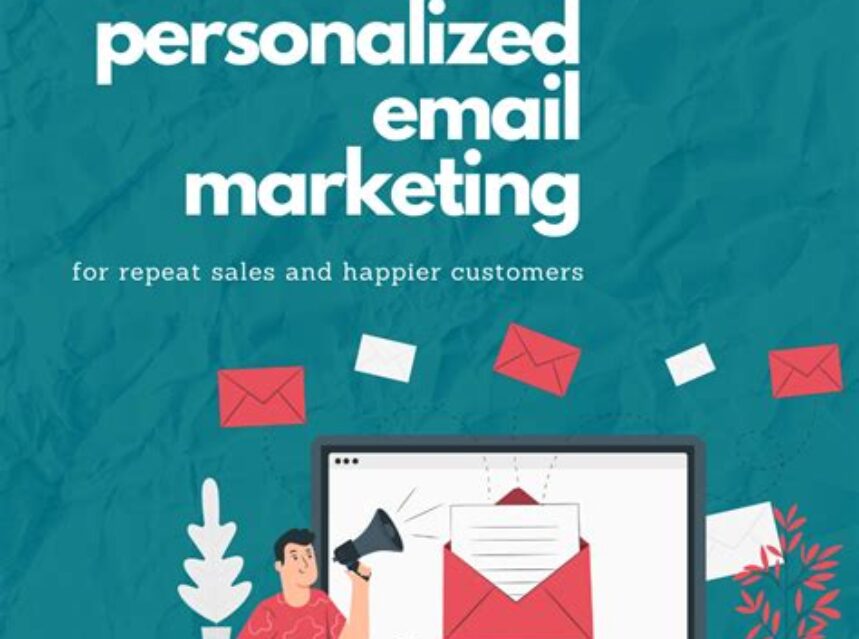The Role of Personalization in Email Marketing Campaigns

Learn how to personalize your email marketing with tailored content, effective strategies, and measuring impact on engagement. Grow your email campaigns with personalized emails.In the fast-paced world of digital marketing, one strategy has continued to stand the test of time: email marketing. And while sending out mass emails to your subscribers can be effective, there’s a growing need for personalization in email marketing campaigns. From understanding the basics of personalization to gathering data for tailored content and implementing personalized email strategies effectively, the role of personalization in email marketing cannot be understated.
In this blog post, we will delve into the significance of personalization in email marketing campaigns. We will explore the various aspects of personalization, including understanding what it entails and how to gather data to create tailored content. Additionally, we will discuss the strategies for implementing personalized email campaigns effectively and measuring their impact on engagement. By the end of this post, you will have a comprehensive understanding of the role of personalization in email marketing and how it can elevate your marketing efforts. Stay tuned as we unlock the power of personalization in email marketing.
Understanding Personalization in Email Marketing
Email marketing has evolved over the years, and personalization has become a key strategy for businesses to engage with their audience. Personalization in email marketing refers to the practice of sending targeted and customized emails to individual subscribers based on their preferences, behaviors, and demographics. It goes beyond simply addressing the recipient by their name; it involves tailoring the content of the email to match the interests and needs of the recipient.
Understanding the importance of personalization in email marketing begins with recognizing its impact on engagement. When emails are personalized, recipients are more likely to open, read, and take action on the content. This ultimately leads to higher conversion rates and a stronger connection with the audience. By leveraging data and insights, marketers can create more relevant and timely communication that resonates with their subscribers.
Gathering accurate and relevant data is crucial for implementing personalization in email marketing effectively. Marketers can collect data through various touchpoints such as website interactions, past purchase behavior, and email engagement metrics. This data is then used to segment the audience and create tailored content that speaks to the specific needs and interests of different segments.
Measuring the impact of personalization on engagement is essential for refining and optimizing email marketing strategies. Marketers can track metrics such as open rates, click-through rates, and conversion rates to gauge the effectiveness of personalized emails. By analyzing these metrics, they can identify areas for improvement and make data-driven decisions to enhance the overall performance of their email campaigns.
Gathering Data for Tailored Content
When it comes to creating personalized email campaigns, the first step is to gather the right data. Gathering data is crucial for understanding your audience and delivering tailored content that resonates with them. This involves collecting information such as demographics, purchasing behavior, and engagement history.
One of the most effective ways to gather data is by analyzing your subscribers’ interactions with your emails. Tracking opens, clicks, and conversions can provide valuable insights into what your audience is interested in and how they are engaging with your content.
Another method for gathering data is by using surveys and feedback forms. These tools allow you to directly ask your subscribers for information about their preferences, interests, and needs. This can help you better understand their individual preferences and tailor your content to match.
Utilizing analytics tools and software can also provide in-depth data on your subscribers. These tools can track various metrics and behaviors, providing a more comprehensive view of your audience and their interactions with your emails.
Creating Personalized Email Campaign Strategies
When it comes to email marketing, creating personalized email campaign strategies is crucial for achieving success. Personalization is the key to reaching your audience in a more targeted and effective way. By tailoring your content to the specific needs and preferences of your subscribers, you can increase engagement and drive better results for your email campaigns.
One of the first steps in creating personalized email campaigns is gathering data for tailored content. This involves collecting and analyzing information about your subscribers, such as their demographics, preferences, and past interactions with your brand. By understanding your audience on a deeper level, you can create more relevant and impactful email content that resonates with them.
After gathering the necessary data, the next step is to understand personalization in email marketing. This means knowing how to use the data you’ve collected to create personalized experiences for your subscribers. From using dynamic content to segmenting your audience, there are various methods for personalizing your email campaigns to better connect with your subscribers.
Once you have a solid understanding of personalization and have gathered the right data, it’s time to implement personalized emails effectively. This involves creating targeted email content, designing visually appealing templates, and using automation to deliver the right message at the right time. By implementing personalized emails effectively, you can increase open rates, click-through rates, and overall engagement with your audience.
Implementing Personalized Emails Effectively
Implementing personalized emails effectively is crucial for any business aiming to improve their email marketing strategy. The first step in this process is to gather relevant data on your target audience. This can include demographics, past purchase behavior, and engagement with previous emails. Understanding your audience is key to creating tailored content that will resonate with them.
Once you have gathered the necessary data, it’s time to create personalized email campaign strategies that will make use of this information. This can involve segmenting your audience based on their interests and behaviors, and creating specific content for each segment. The goal is to make every recipient feel like the email was crafted just for them, increasing the chances of engagement.
After crafting your personalized email content, it’s important to ensure that it is being implemented effectively. This involves using an email marketing platform that allows for easy segmentation and personalization, as well as providing the ability to track the success of your campaigns. Testing different personalization tactics and analyzing the results will help you understand what resonates best with your audience.
Finally, it’s crucial to measure the impact of personalization on engagement. This can be done through tracking metrics such as open rates, click-through rates, and conversion rates. By analyzing these metrics, you can gain valuable insights into how personalized emails are affecting your audience’s behavior, and make adjustments to your strategy accordingly.
Measuring Personalization Impact on Engagement
One of the key factors in successful email marketing is personalization. It has been proven time and time again that personalized emails result in higher engagement rates. But how do we measure the impact of personalization on engagement? This is crucial in order to understand the effectiveness of our email marketing efforts.
One way to measure the impact of personalization on engagement is by tracking open rates. By using personalized subject lines and content, we can monitor how many recipients actually open the emails. Comparing open rates between personalized and non-personalized emails can give us important insights into how effective personalization is in capturing the attention of the recipients.
Another metric to consider is click-through rates. Once the email is opened, the next step is to entice the recipient to take action. By analyzing the click-through rates of personalized content compared to generic content, we can gauge the impact of personalization on engagement. If personalized emails result in higher click-through rates, it indicates that the recipients are more actively engaging with the content.
Furthermore, we can also measure the impact of personalization on engagement by analyzing conversion rates. Ultimately, the goal of email marketing is to drive conversions. By tracking conversion rates from personalized emails, we can determine how effective personalization is in motivating recipients to take the desired action. A higher conversion rate from personalized emails would indicate a positive impact on engagement.



